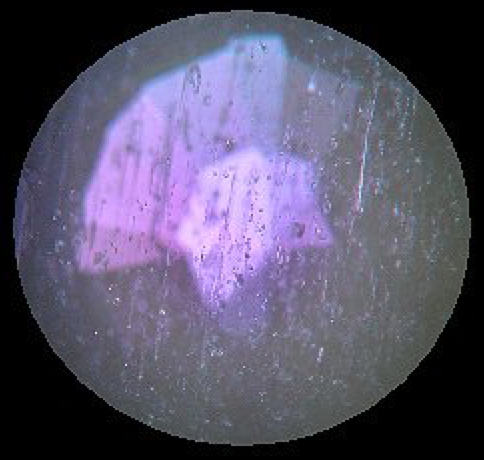Identifying Synthetic Gems
Distinguishing between natural and synthetic gems is a critical skill for gemologists. Learn about gem making processes and the telltale signs they leave.
15 Minute Read
Basic Terminology for Synthetic Gems
You should know the following definitions:
- Natural Gems — formed in the Earth
- Synthetic Gems — duplicates of natural gems grown in a lab
- Homocreates — synthetic gem materials with no natural counterparts
- Imitations — gemstones or other materials presented as other kinds of gems
You can find more information on these terms in our guide to gem classification.
Keep in mind that some of these definitions can overlap. For example, you may find a synthetic corundum stone offered for sale as an imitation aquamarine.
What to Look For First in Synthetic Gems
Examine the clarity and color of your gemstone.
- Very fine clarity may be the first indication you’re dealing with a synthetic, since few natural gems are clean to 10X, much less anything higher.
- Synthetic gems mimic the best of the natural gem world, so expect them to show fine color. For example, if you’re examining a stone with only modest saturation, you can bet you have a natural.
Some Caveats Regarding Clarity and Synthetic Gems
- If you can’t find natural inclusions with a loupe, you probably have a synthetic. While this isn’t proof, it’s a strong clue. You should
…
Donald Clark, CSM IMG
Donald Clark, CSM founded the International Gem Society in 1998. Donald started in the gem and jewelry industry in 1976. He received his formal gemology training from the Gemological Institute of America (GIA) and the American Society of Gemcutters (ASG). The letters “CSM” after his name stood for Certified Supreme Master Gemcutter, a designation of Wykoff’s ASG which has often been referred to as the doctorate of gem cutting. The American Society of Gemcutters only had 54 people reach this level. Along with dozens of articles for leading trade magazines, Donald authored the book “Modern Faceting, the Easy Way.”
Related Articles
Specific Gravity Testing Part 4: Refining Your Specific Gravity Testing Techniques
Identifying Inclusions Found in Natural Gems
Destructive Gemstone Tests: Hot Point Testing
The Art and Science of Identifying Gemstones
Latest Articles
800 Years of Mogok: A Celebration in Tenuous Times
What is the Average Gemstone Faceting Yield?
Pyroxmangite Value, Price, and Jewelry Information
How to Identify Emerald Simulants and Synthetics
Never Stop Learning
When you join the IGS community, you get trusted diamond & gemstone information when you need it.
Get Gemology Insights
Get started with the International Gem Society’s free guide to gemstone identification. Join our weekly newsletter & get a free copy of the Gem ID Checklist!
